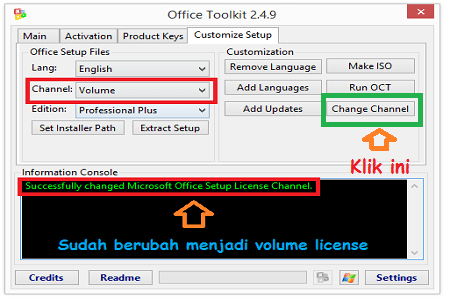
Invalid Checksum After Decoding Window Microsoft Toolkit Windows
Has been with us since Windows 2000. It is an infrastructure for raising events from various system components, and has only been used by a small number of kernel-mode entities. In Windows XP, MOF files (familiar from WMI provider metadata) were used to describe events. Finally, in Windows Vista and Windows Server 2008 events were described by XML manifests, an investment was made in popularizing ETW, and hundreds of new event providers were added. What kind of information is generated by all these providers? Well, first of all, there’s the which consumes generated by ETW providers (but not all).
So we get all kind of diagnostic messages on things happening in the system. Another provider is the Performance Monitor, which features the ability to query a collection set of ETW events.
Aug 12, 2018 The steps for Windows 8.1 applies well to Windows 10 also. Disclaimer: Please reset the computer to start as usual after troubleshooting with clean boot by referring above article. If the issue persist, follow the below method. Q: Windows Vista BIOS Crash My computers operating system is Windows Vista, currently I cannot get past the BIOS loading screen, once in a blue moon I am able to log onto the account. Once there I checked all the drivers were updated, removed all recently installed hardware, even programs a month old and nothing, So after I tried the system.
Integrating these various sources of information is not an easy task, especially if you are alternating between analyzing a system as a whole and analyzing a set of specific applications within the same trace. It is this integration that has led to the birth of the. It features the data collection and integration tools necessary to interpret and utilize ETW output correctly.
It is specifically constructed so that lots of information can be viewed in a coherent fashion, and so that a system-wide image of what’s going on can be obtained. Additionally, through the use of the kernel sampling interrupt, a global sampling profiler is available (including call stack analysis).
And best of all? It’s completely free! So let’s take a look at some of the abilities of this new toolkit. First of all, you need to install it from.
Note that the installation is only Windows Vista SP1 and Windows Server 2008 (I got it to be almost fully functional without Vista SP1, but caveat emptor). Data collection can be performed on a Windows XP SP2 or Windows Server 2003 system ( xperf.exe and perfctrl.dll for that), but the trace decoding can only be performed on NT 6.0 and higher. Let’s start with a sample global data collection. (By the way, if you’re not into my walkthroughs, the toolkit comes with an extensive set of documentation – and offline. The starter document is 65 pages, which gives you an idea of how big this thing really is.) I went to an administrative command line prompt on my Vista, navigated to the toolkit’s installation directory (C: Program Files Microsoft Windows Performance Toolkit by default) and typed. Xperf -on Base This enables a set of ETW providers to publish their events (the exact set of providers can be seen by typing xperf -providers). These events are then collected and written to temporary buffers.
Note that these temporary buffers might grow very large, so if you plan to perform data collection across a long period of time, you better have some free disk space and lots of memory available on the box. I then proceeded to write a few lines in this post, open a couple of programs, and then went back to the command line and typed.
Xperf -d result.etl This disables the selected ETW data collection and writes the raw results to the result.etl file (note that this command might take quite some time to complete). These results are, well, raw, so they need to be analyzed soon.
Daemon tools pro 8.1.0.0654 activation. Ad-aware Pro 12 Serials Serial Numbers. Convert Ad-aware Pro 12 Serials trail version to full software. Adobe Photoshop Extended CS5 Serials - your underground partner. Photoshop Cs5 Serial Number Pc Serial Numbers. 0%: 2009-10-22 23:27:13: Ad-Aware PRO 7 Serial. Serial Number Photoshop Cs5.1 Trial; Universal Serial Number For.
We can accomplish this via the command line by launching a set of actions on the output file, or using the GUI Performance Analyzer tool (xperfview) which is part of the toolkit. Game of thrones season 7 episode 3 sub indo. An example of what you can accomplish on the command line can be demonstrated by typing the following action sequence.
Start Time, End Time, Process, DataPtr, Process Name ( PID), ParentPID, SessionID, UniqueKey MIN, MAX, Process, 0X168EE0, Idle ( 0), 0, 0, 0x000400 MIN, MAX, Process, 0X1693C0, System ( 4), 0, 0, 0x0000fa MIN, MAX, Process, 0X1A17A0, svchost.exe ( 356), 708, 0, 0x0000fa8004ce4040 MIN, MAX, Process, 0X171080, smss.exe ( 520), 4, 0, 0x0000fa800455f610 MIN, MAX, Process, 0X1712B0, csrss.exe ( 616), 604, 0, 0x0000fa8004804c10 MIN, MAX, Process, 0X1904A0, svchost.exe ( 620), 708, 0, 0x0000fa8004d2ac10 Another example of command line info generation would be. Xperf result.etl from the command line. Here’s what the initial output looks like on my system: That sure looks like a lot of useful data! The first graph is CPU utilization by process, the second one is disk utilization by process. Xperf -on SysProf Note for advanced users: “Base” would also have worked, because it also enables profiling. If I’m not interested in collecting disk I/O and memory statistics, however, then I’m better off with “SysProf” (which resolves to PROC_THREAD+LOADER+PROFILE). Without PROC_THREAD and LOADER you won’t get reliable results.